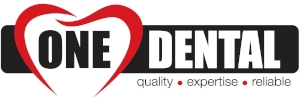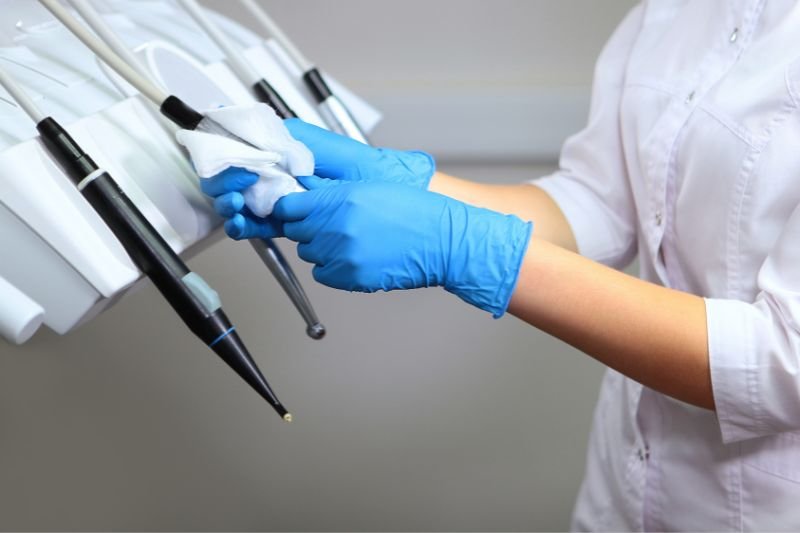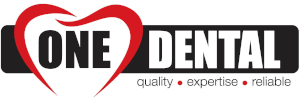|
One Dental Pty Ltd |

|
|---|
Best practices for a healthy practice - dental instrument sanitisation
November 17, 2023
A dental practice is a place where smiles take shape, fears find solace and oral health is preserved. In the background, an unsung hero allows it all to happen safely. It's not an object. It's a vital process that keeps your clinic running, quite literally - dental instrument sanitisation.
One Dental is your Australian-owned, premier supplier of dental products for students, educators and private practices, including infection control and sanitisation items. And we're dedicated to elevating your clinic's health and safety standards. So, mask up, put your gloves on and let’s talk about best practices for dental instrument sanitisation.
Understanding the importance of sanitisation
Would you use a stranger's toothbrush? Absolutely not. In the world of dentistry, it's not just a matter of protocol; it's a matter of patient safety. Inadequate dental instrument sanitisation can lead to cross-contamination, potentially exposing patients to infections and harmful bacteria. Subpar sanitisation standards can lead to serious patient harm and legal repercussions.
The process involves much more than ticking boxes on an endless checklist. It’s a promise to your patients that their health and safety are your top priorities. While compliance is an essential factor, your true commitment should be to providing a sterile, risk-free environment for everyone who walks through your doors.
Patients recognise when you go the extra mile to ensure their safety. By excelling in cleanliness and hygiene, you not only protect your patients but also establish your practice as a trusted source of dental care. You’ll foster positive patient experiences and long-term clinic loyalty.
Essential steps
While the exact process may vary based on the instrument, it’s essential to follow the manufacturer’s instructions for dental instrument sanitisation. Common steps typically include personal protective measures, precleaning, drying, packaging, sterilisation, storage and quality control.
After donning your personal protective equipment (PPE), the initial step is pre-cleaning, which involves removing visible debris and contaminants from dental instruments by rinsing, brushing or using ultrasonic cleaning.
Next, thoroughly dry the instruments before securely packaging them in sterilisation pouches or wraps. Now they’re ready for sterilisation. Sterilisation can occur using chemical methods or heat-based methods such as dry heat or autoclaving, which is most common.
Once sterilised, place the instruments in a clean and secure storage area to maintain their sterility until needed for future use. Quality control requires regular monitoring, testing and maintenance of sanitisation equipment and processes to ensure their ongoing effectiveness.
Ideally, clean dental instruments promptly. If immediate cleaning is not possible, immerse them in a holding solution to prevent residues from drying onto the instruments.
Maintaining current industry standards
“Strict adherence to recommended infection control protocols forms the cornerstone of modern, safe dental practice.” - ADA, Practical Guide to Infection Control
In Australia, every practitioner is responsible for being aware of the mandatory rules and regulations concerning infection control within their specific state or territory. The Dental Board of Australia and the Australian Dental Association (ADA) establish the guidelines, standards and codes of practice that guarantee the utmost patient safety and quality care.
To ensure your practice is in compliance, learn more about sanitisation from ADA or read their Practical Guide to Infection Control.
Efficiency and other aspects of hygiene
Efficiency in dentistry is crucial, whether it involves equipment, personnel or time management. This is particularly important in tasks like sanitisation, which is non-negotiable. However, streamlining the sanitisation process can optimise resource efficiency while still adhering to the highest safety standards. Implement a standardised procedure with clear steps, conduct regular maintenance and calibration, and keep instruments and cleaning equipment in organised locations for easy access and efficient storage.
Instrument sanitisation aside, dental professionals must also prioritise hand hygiene, as it plays a critical role in reducing the transmission of organisms and bacteria and protecting the professional and the patient. Follow a routine handwashing regimen that includes washing before and after working with each patient, after handling contaminated objects, after removing torn or punctured gloves or whenever hands are visibly soiled.
Always handle instruments with gloved hands. Never use bare hands.
Talk to the experts in dental supplies
The success of hygiene and sanitisation in dentistry lies in the principle of prevention being superior to treatment. Taking a proactive approach to cleanliness can avert numerous future issues.
From process to products, if you have questions about dental instrument sanitisation, our friendly, experienced team can help. At One Dental, we know what you need to maintain a clean, safe, modern dental practice.
Talk to our team today to discuss your needs.


